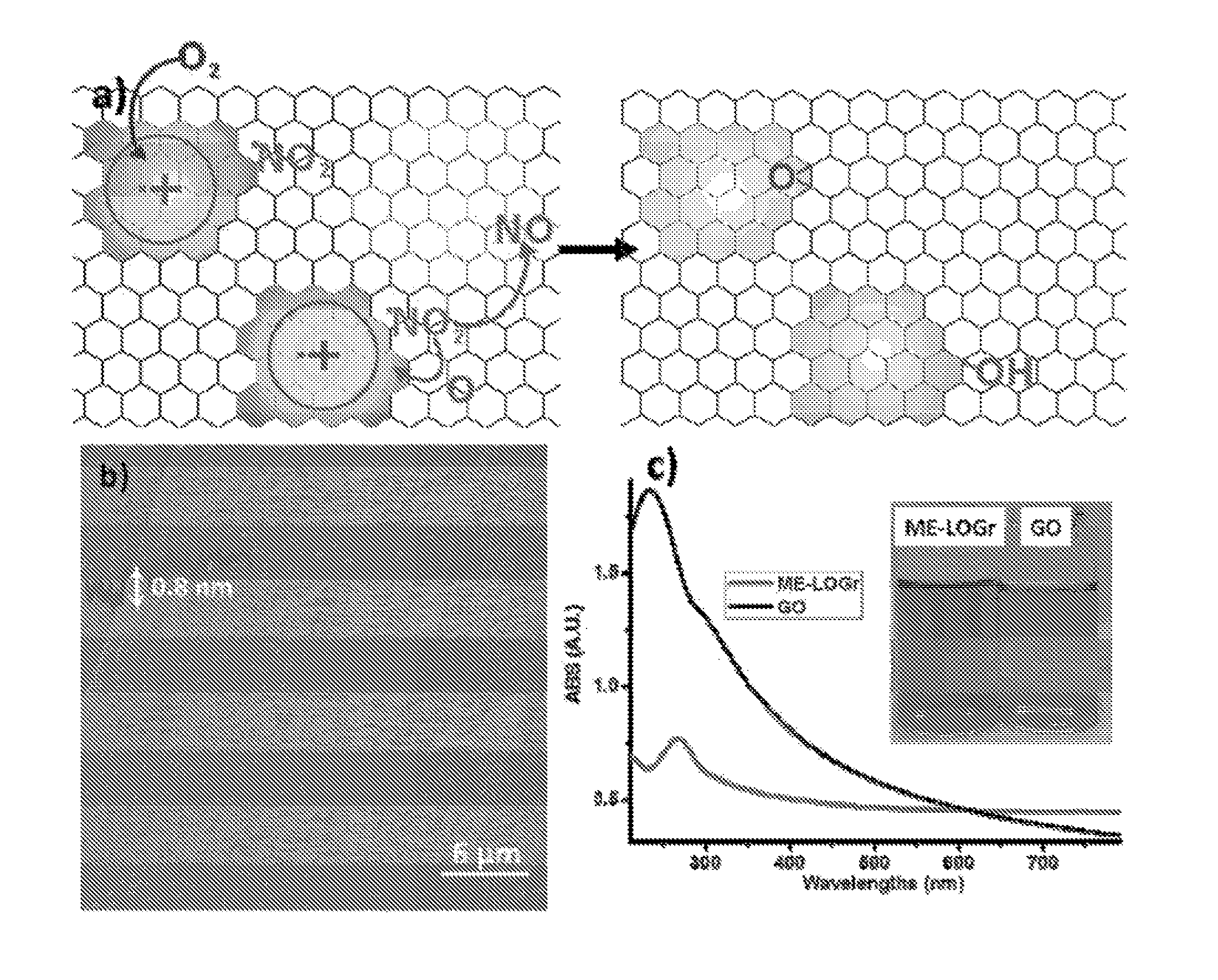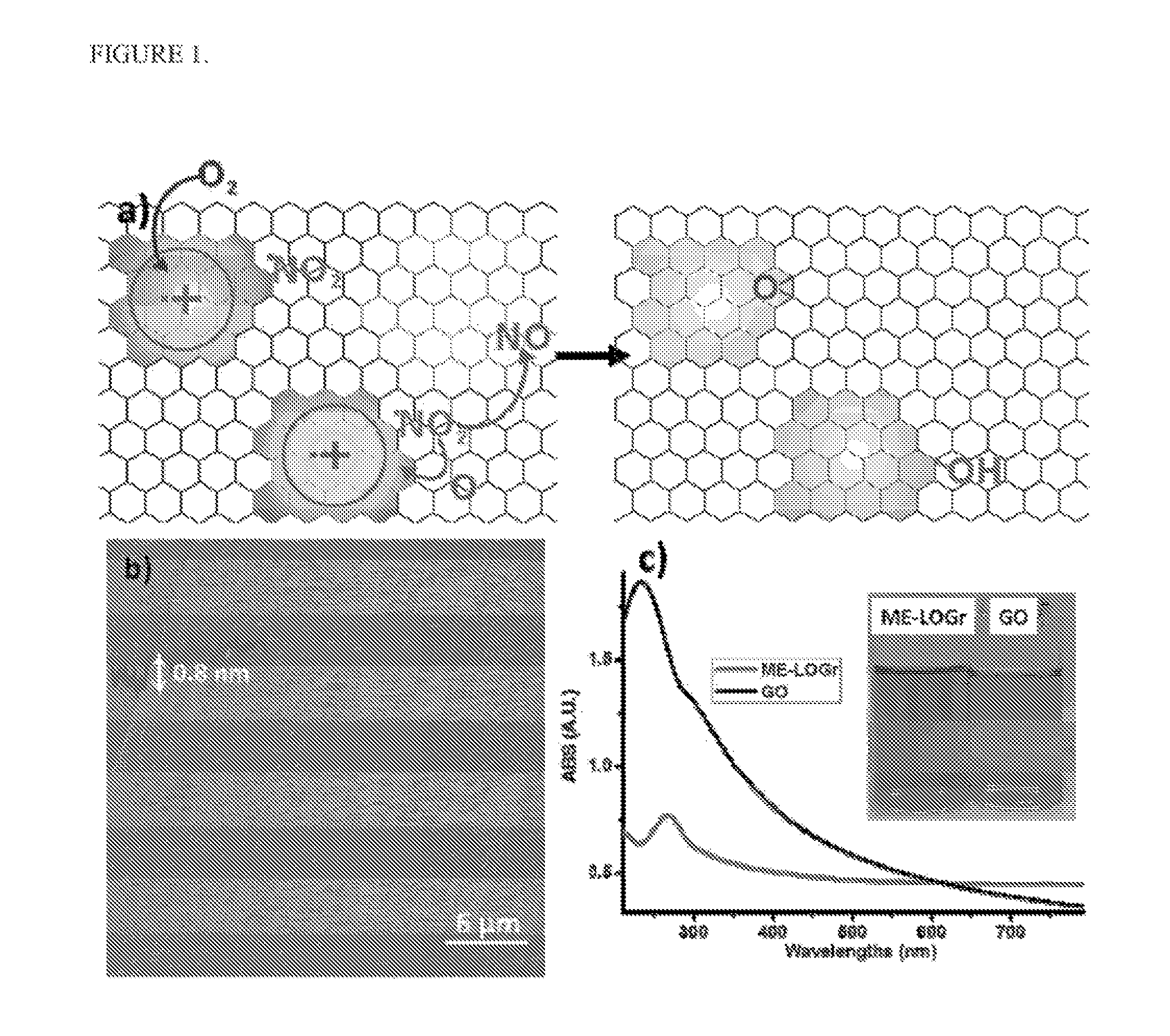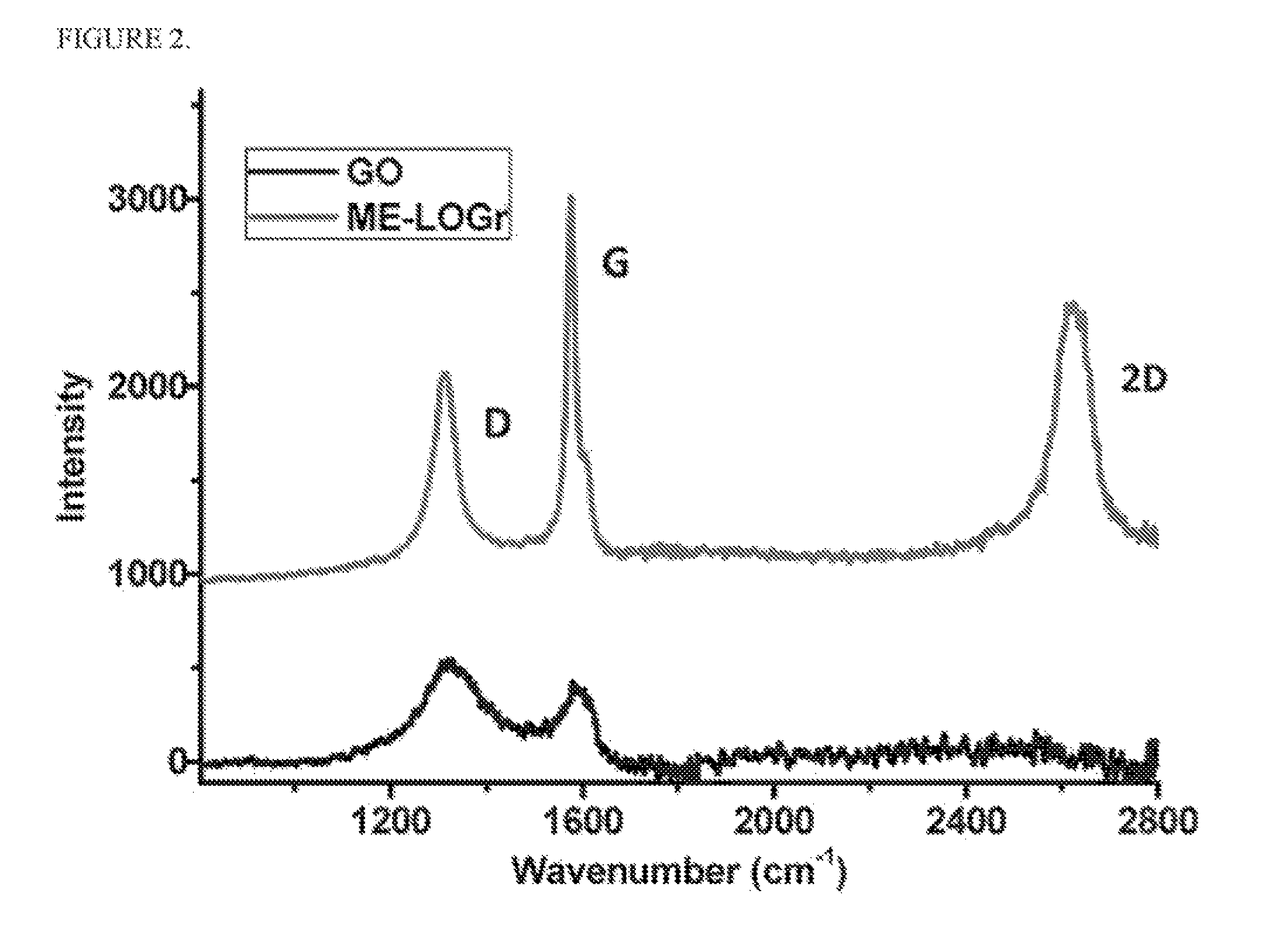Direct Production of Large and Highly Conductive Low-Oxygen Graphene Sheets and Monodispersed Low-Oxygen Graphene Nanosheets
- Summary
- Abstract
- Description
- Claims
- Application Information
AI Technical Summary
Benefits of technology
Problems solved by technology
Method used
Image
Examples
example 1
Using Microwave Heating to Produce Lightly Oxidized Graphene Sheets (ME-LOGr)
[0074]20 mg of synthetic graphite powder was added to a mixture of sulfuric acid and nitric acid, (ratio of 1:1 with a total volume of 10 mL) in a round bottom flask. The mixture was then swirled and mixed, and then placed into a CEM Discover microwave reactor chamber. The flask was connected to a reflux condenser, which passes through the roof of the microwave oven via a port, and subjected to 30 seconds of 300 watt microwave irradiation. The graphene sheets were formed as a suspension in the aqueous phase above the solid residual of unreacted graphite. The whole content was then filtered through an anodisc alumina filter membrane with 0.2 μm pore size, and washed with 600 mL of deionized water. The filtrand was then re-dispersed into water with a 30 minute bath sonication. The obtained grey dispersion was then centrifuged at 4000 r.p.m. for 20 minutes to remove the small amount of un-exfoliated graphite u...
example 2
Control Experiment
[0075]A control experiment was performed by adding a small amount (0.65 g) of KMnO4 into the HNO3 / H2SO4 mixture of Example 1 prior to the microwave irradiation. The solution was then neutralized, using 4M NaOH, and extensive dialysis was performed to completely remove the produced salt and ions.
example 3
Synthesis of GO
[0076]GO was synthesized using the modified Hummer method from the same graphite powder mentioned above. Accordingly, 0.5 g of graphite, 0.5 g of NaNO3 and 23 mL of H2SO4 were stirred and mixed until homogenized in an ice bath. Then 3 g of KMnO4 was gradually added into the reaction over 1 hour while stirring. The reaction temperature was maintained at about 35° C. in a wafer bath. After 1 hour, 40 mL of water was then added into this brownish thick, paste. The solution was stirred for another 30 minutes after the temperature was stabilized at 95° C. 100 ml, more of deionized (“DI”) water was then added to the solution, followed, by 3 ml, of 35% H2O2 while the temperature of the solution was still maintained at around 95° C.
[0077]Upon the addition, of H2O2, the color of the solution turned from dark brown to yellow. Finally, this warm and yellow-ish solution was filtered with a 0.2 μm polycarbonate filter and extensively washed with 1 L of DI water to remove all trace...
PUM
 Login to View More
Login to View More Abstract
Description
Claims
Application Information
 Login to View More
Login to View More - R&D
- Intellectual Property
- Life Sciences
- Materials
- Tech Scout
- Unparalleled Data Quality
- Higher Quality Content
- 60% Fewer Hallucinations
Browse by: Latest US Patents, China's latest patents, Technical Efficacy Thesaurus, Application Domain, Technology Topic, Popular Technical Reports.
© 2025 PatSnap. All rights reserved.Legal|Privacy policy|Modern Slavery Act Transparency Statement|Sitemap|About US| Contact US: help@patsnap.com



